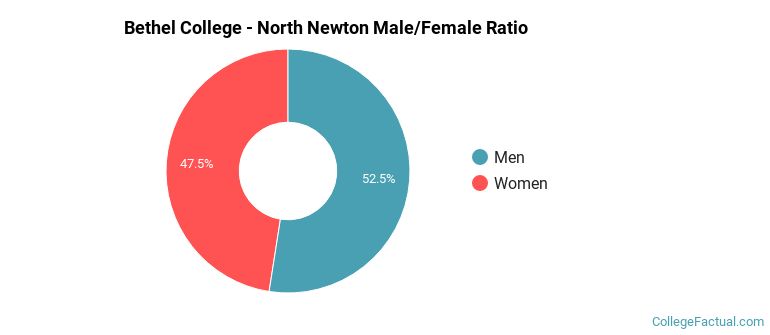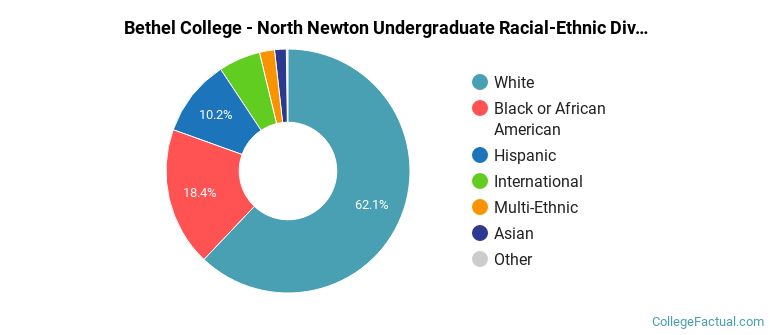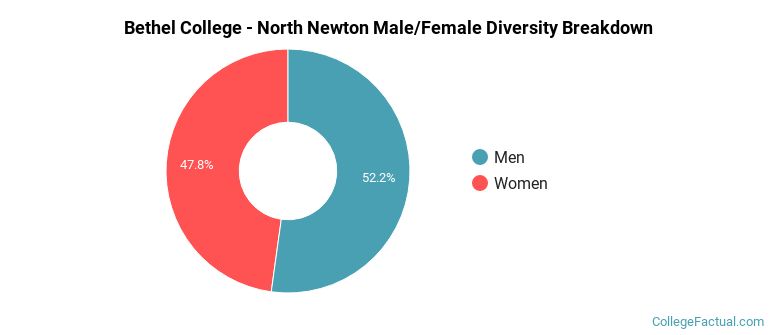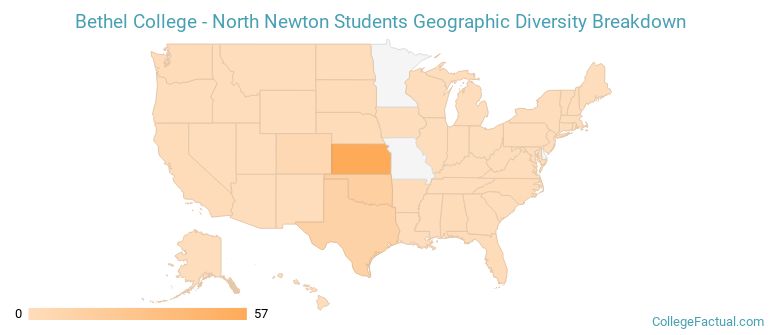 by our College Data Analytics Team
by our College Data Analytics TeamBethel College - North Newton total enrollment is approximately 484 students.
Male/Female Breakdown of Undergraduates
The full-time Bethel College - North Newton undergraduate population is made up of 49% women, and 51% men.

For the gender breakdown for all students, go here.
Bethel College - North Newton Racial/Ethnic Breakdown of Undergraduates

| Race/Ethnicity | Number |
|---|---|
| White | 278 |
| Black or African American | 67 |
| Hispanic | 64 |
| International | 29 |
| Asian | 12 |
| Multi-Ethnic | 4 |
| Native Hawaiian or Pacific Islander | 1 |
| Unknown | 1 |
See racial/ethnic breakdown for all students.

| Race/Ethnicity | Number |
|---|---|
| White | 290 |
| Black or African American | 67 |
| Hispanic | 64 |
| International | 29 |
| Asian | 12 |
| Multi-Ethnic | 4 |
| Native Hawaiian or Pacific Islander | 1 |
| Unknown | 1 |

There are approximately 239 female students and 245 male students at Bethel College - North Newton.
Bethel College - North Newton ranks 870 out of 2,183 when it comes to geographic diversity.
42.42% of Bethel College - North Newton students come from out of state, and 1.98% come from out of the country.

The undergraduate student body is split among 12 states (may include Washington D.C.). Click on the map for more detail.

| State | Amount |
|---|---|
| Kansas | 57 |
| Oklahoma | 16 |
| Texas | 12 |
| Colorado | 6 |
| Alabama | 1 |
Learn more about international students at Bethel College - North Newton.
A traditional college student is defined as being between the ages of 18-21. At Bethel College - North Newton, 72.37% of students fall into that category, compared to the national average of 60%.

| Student Age Group | Amount |
|---|---|
| 20-21 | 187 |
| 18-19 | 177 |
| 22-24 | 74 |
| 35 and over | 25 |
| 25-29 | 23 |
| 30-34 | 13 |
| Under 18 | 0 |
Footnotes
*The racial-ethnic minorities count is calculated by taking the total number of students and subtracting white students, international students, and students whose race/ethnicity was unknown. This number is then divided by the total number of students at the school to obtain the racial-ethnic minorities percentage.
References
Department of Homeland Security Citizenship and Immigration Services
Read College Factual's Diversity Ranking Methodology.